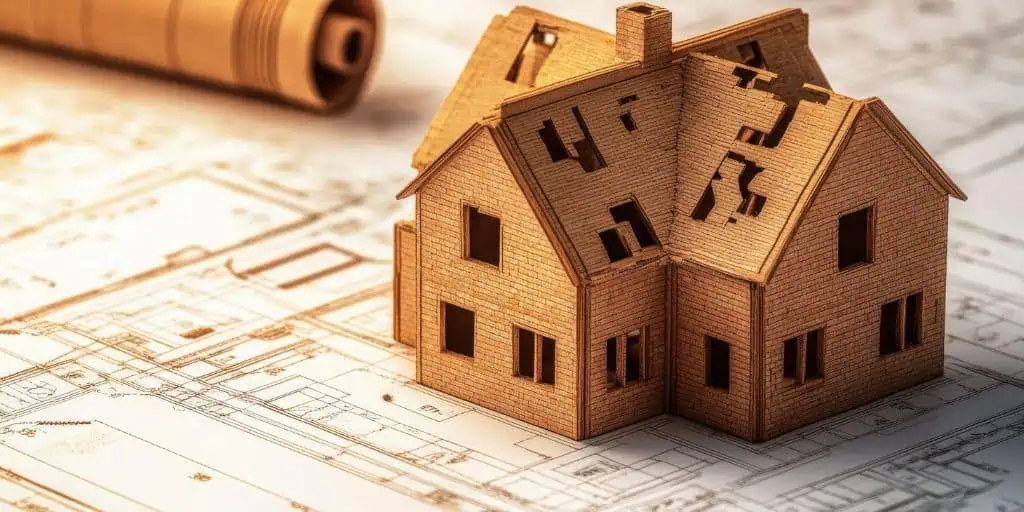
When I first started flipping houses, I believed what most beginners believe: that you need piles of cash or a big line of credit to get started. Back then, I had neither.
I was working full-time, tired most nights, and putting every spare dollar into marketing to find motivated sellers. One Friday evening in my late teens, I almost skipped an appointment that ended up changing my real estate career forever.
It became the deal where I earned $25,000 ($50,000 in today’s money!) without using a single dollar of my own money.
The appointment I almost canceled
That lead came through my website. The seller had filled out a simple form but didn’t want to talk much on the phone. She sounded defensive and vague, and the only time she was available to meet was late Friday afternoon, right when my energy was at zero after a long week at work.
I almost canceled. Instead, I decided to push through and go.
When I arrived, I found a clean little box-ranch-style home: three bedrooms, two baths, roughly 1,400 sqft, built in the early 2000s. The yard was overgrown, but the bones were great. Inside, half-packed suitcases told the story before she did.
She was moving to Texas the next morning.
She’d had an accepted offer from a large iBuyer for a strong price, but after the inspection, they sent her a list of minor repair demands and then went silent. No calls, no emails. She was stranded. That’s how she’d found me, when she made a Google search for “cash home buyers near me.”
Sitting in her living room surrounded by boxes, I realized she didn’t need another promise; she needed a certain close.
The offer that solved her problem
I walked the property and found “all the right things wrong with it.” Carpet, paint, a short punch list. The roof and HVAC were solid.
I made a simple offer:
- As-is condition
- All cash
- Closing in seven days
The price covered her existing mortgage and gave her enough for moving expenses. She accepted, relieved to have an actual plan before her flight.

The property in question.
At that point, I had one small problem: I didn’t have the cash.
My marketing campaigns had eaten my reserves. I could have wholesaled the contract for a $7,500 assignment fee, but I knew this house had more potential than that. I considered taking it “subject to” the existing mortgage, but the rate was high, and the payment matched the market rent. That didn’t pencil out either.
That’s when the light bulb went off.
The 50/50 equity-for-financing strategy
Earlier that year, I’d built a relationship with a local contractor who’d recently quit his job to flip full-time. He had capital, crews, and momentum. I had the deal.
So I called him and proposed this:
“You fund the purchase, rehab, and closing costs. I’ll manage the project, and when we sell, we split the profits fifty-fifty.”
He agreed.
In simple terms, this was equity financing, not debt. I wasn’t borrowing money with interest or making payments. Instead, I sold a share of the deal in exchange for the cash to make it happen.
We documented the arrangement clearly:
- The contractor’s LLC provided all funding.
- My company handled acquisition, renovation oversight, and resale.
- Both of us signed a joint-venture agreement detailing scope, communication, and profit distribution.
This wasn’t a loan. There were no points, no monthly payments, and no personal guarantee. My partner carried the financial risk; I carried the execution risk.
The deal: by the numbers
Here’s how it broke down:
| Item | Amount |
|---|---|
| Purchase price | $130,000 |
| Repairs | $6,500 |
| Total invested | $136,500 |
| Sale price | $205,000 |
| Gross profit | $68,500 |
| Net after closing & holding | ~$50,000 |
| Split | 50/50 = $25,000 each |
I made $25,000 with zero dollars out of pocket. That’s what I call an infinite return on investment.
Of course, I had invested time and money in my marketing to generate the lead: my website, SEO, and systems. But for this individual flip, no personal funds or credit were used.
Why it worked (and why it’s smart for beginners)
- No personal financial risk: If the project had gone south, my worst-case scenario was lost time and not bankruptcy. For a beginner, that’s invaluable peace of mind.
- Built-in mentorship: My partner was an experienced rehabber. He reviewed my numbers, caught things I missed, and validated that the deal was worth funding. If he was willing to risk his capital, that was confirmation the numbers worked.
- Speed and certainty: The seller needed a seven-day close. Traditional financing or hard money would have taken too long. Equity financing got us to the closing table immediately.
- Real-world credibility: After this project, I could tell future lenders and partners, “I’ve successfully completed a flip with a full renovation and sale.” That experience opened more doors than any course or certification ever could.
The emotional side: regret vs. reality
After closing, I felt a little pang of regret. I couldn’t help thinking, “I could have done this myself and kept the whole $50k.”
That’s a natural thought, but not a productive one.
The truth is, I needed that deal to prove the model worked. Without the partner, I might have sat on that contract or wholesaled it for a quick $7,500. Instead, I made $25k, learned the flipping process from start to finish, and gained a relationship that led to future projects.
Zero financial risk for a $25k profit and hands-on experience? That’s a no-brainer.
Lessons for investors
There are some key takeaways from this flip that I almost walked away from:
Partnerships beat paralysis
If you find yourself staring at a great deal but have no funds, don’t just walk away. Trade equity for financing and move forward. Half of something is better than 100% of nothing, after all.
Write it down
Even when working with someone you know, always have a clear written agreement outlining who does what, how profits are split, and what happens if things go wrong.
Seek experienced capital
Don’t chase the highest offer of money. Choose a partner who brings knowledge, oversight, and connections. Their due diligence can prevent costly mistakes.
Communication is the glue
Throughout the project, I sent weekly updates and photos. Transparency builds trust and makes future deals easier.
Accept the trade-offs
Yes, giving up 50% hurts. But losing your savings on a bad flip hurts a lot more. Early in your career, prioritizing survival and learning over maximum profit is how you stay in the game long enough to get really good.
Would I Do It Again?
Absolutely! Especially with the right partner and the right deal.
This structure isn’t for every situation. It works best when:
- You have a truly good deal under contract.
- You lack the capital or credit to close.
- The project’s scope is simple enough for clear oversight.
It’s not ideal for complex renovations, thin margins, or when you already have strong liquidity. But as a beginner’s bridge between wholesaling and fully funded flips, it’s perfect.
Final Thoughts
That one Friday night deal taught me more than any seminar ever could. I learned that:
- Showing up matters, even when you’re tired.
- Creativity can replace capital.
- And sometimes the best financing isn’t debt at all; it’s partnership.
If you’re sitting on the sidelines thinking you can’t start until you have money, remember this: resourcefulness beats resources every time.
Mike Otranto is a full-time real estate investor in North Carolina and author of Houseflow Formula: A High-Tech Path to Financial Freedom Through Real Estate. He shares creative strategies for deal structuring, financing, and marketing for investors on YouTube @MikeOtranto and Instagram @Mike_Otranto









